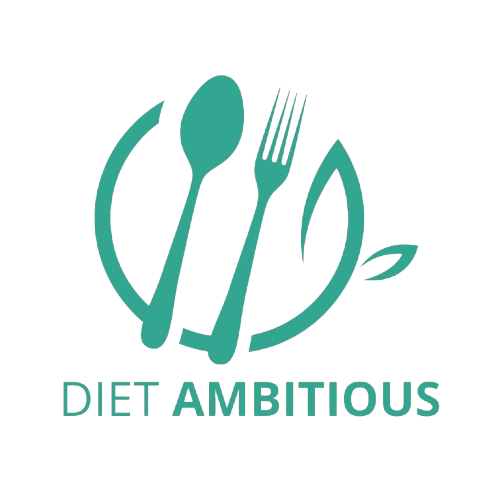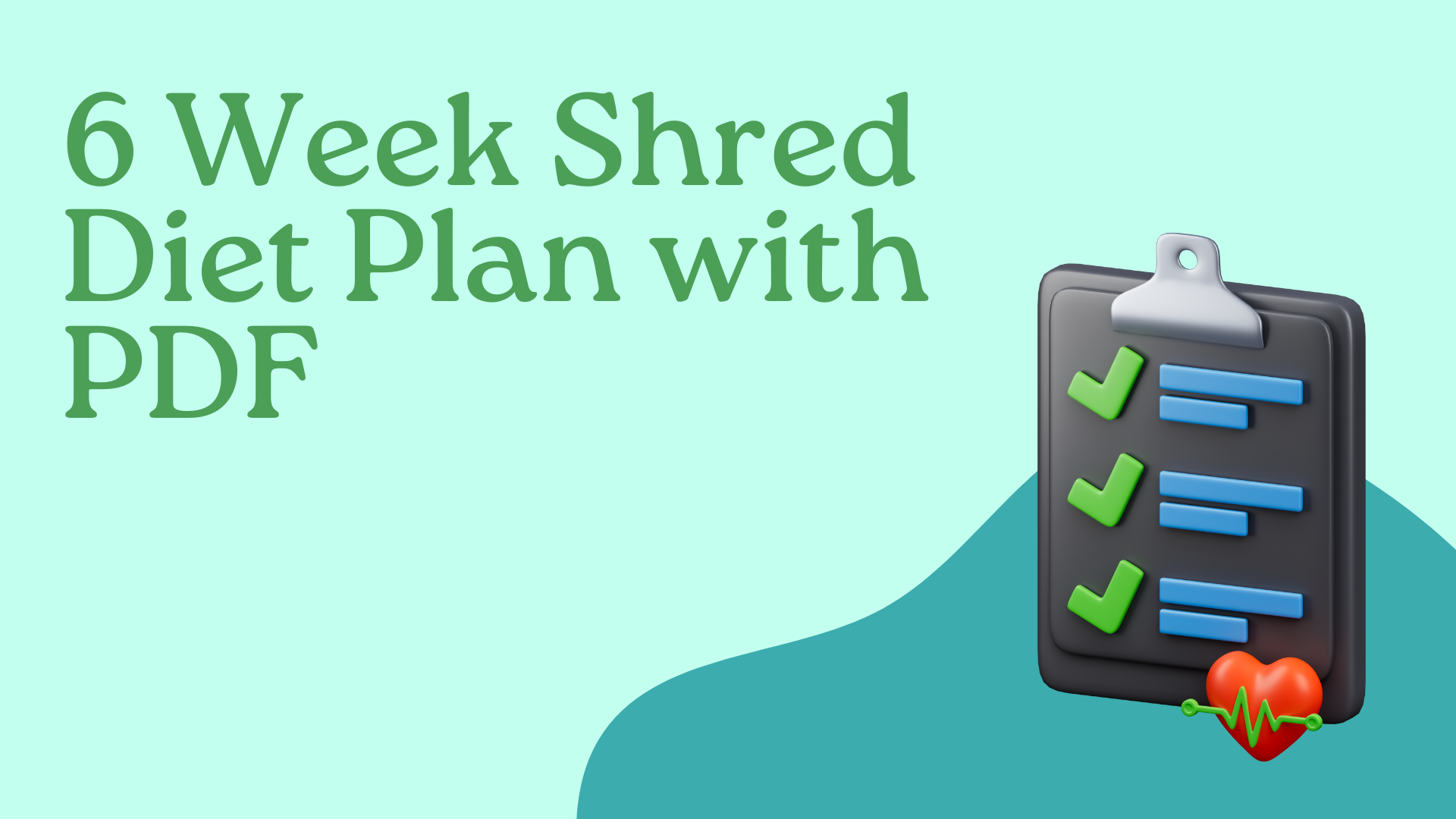The 6-Week Shred Diet Plan is designed to help individuals lose fat, increase lean muscle mass, and improve overall fitness. Whether you’re looking to slim down for a special event, kickstart a healthier lifestyle, or just want to challenge yourself, this diet plan provides a structured approach to achieving your fitness goals.
This plan is not only about cutting calories but also focusing on proper nutrition, balance, and consistency. The key to success is sticking to the diet, keeping up with regular exercise, and being patient throughout the process. Below, we’ll cover a 6-week shred diet plan, along with guidelines for each week to ensure you’re staying on track for maximum results.
Table of Contents

Week 1: Start Strong with Clean Eating
The first week is about laying the foundation for your journey. Focus on eliminating processed foods and sugar from your diet, while incorporating whole, nutrient-dense foods. At this stage, your body will be adjusting to the changes, so it’s essential to build healthy eating habits.
Foods to Include
- Lean proteins: Chicken breast, turkey, lean beef, eggs
- Complex carbohydrates: Sweet potatoes, quinoa, brown rice, oats
- Healthy fats: Avocados, olive oil, nuts, seeds
- Non-starchy vegetables: Spinach, kale, broccoli, zucchini, bell peppers
- Fruits: Berries, apples, grapefruit, oranges
Meal Structure
- Breakfast: Scrambled eggs with spinach and avocado
- Lunch: Grilled chicken breast with quinoa and steamed broccoli
- Dinner: Baked salmon with a side of roasted sweet potatoes and mixed greens
Week 2: Increase Protein Intake and Cut Out Sugary Beverages
In week 2, aim to increase your protein intake to support muscle retention while reducing your carb intake slightly. Focus on lean sources of protein and cut out sugary beverages (including soda, energy drinks, and fruit juices). This will help curb your sugar cravings while keeping your energy levels steady.
Foods to Include
- Lean protein sources like fish, chicken, turkey, and lean beef
- More non-starchy vegetables like cauliflower, kale, cucumbers, and bell peppers
- Healthy fats like coconut oil, olive oil, and ghee
Meal Structure
- Breakfast: Greek yogurt with chia seeds and mixed berries
- Lunch: Grilled shrimp with quinoa and sautéed spinach
- Dinner: Grilled turkey breast with roasted asparagus and a side salad
Week 3: Introduce Intermittent Fasting (Optional)
By the third week, consider introducing intermittent fasting (IF) to enhance fat-burning. IF involves fasting for 16 hours and eating within an 8-hour window. This method helps regulate insulin levels and accelerates fat loss. If you’re not comfortable with fasting, continue with three balanced meals per day.
Foods to Include
- Lean proteins
- Low-carb vegetables such as leafy greens and cruciferous vegetables
- Healthy fats like avocado, almonds, and walnuts
- Whole grains like brown rice or quinoa (in moderation)
Meal Structure (for IF)
- Breakfast (Post-Fast): Omelet with spinach and turkey sausage
- Lunch: Tuna salad with avocado, cucumbers, and olive oil dressing
- Dinner: Grilled chicken with roasted vegetables (zucchini, carrots, and bell peppers)
Week 4: Reduce Carbs and Focus on Healthy Fats
During the fourth week, shift your focus to a higher intake of healthy fats and lower your carb intake to promote fat burning. This week will help you burn off excess fat while preserving lean muscle.
Foods to Include
- Healthy fats: Coconut oil, olive oil, grass-fed butter, avocado
- Lean proteins
- Non-starchy vegetables
- Berries (in moderation)
Meal Structure
- Breakfast: Bulletproof coffee (coffee with butter and MCT oil)
- Lunch: Grilled chicken with a side of guacamole and roasted zucchini
- Dinner: Pan-seared salmon with a kale and spinach salad
Week 5: Focus on Strength Training and Stay Consistent with Your Diet
In the fifth week, consistency is key. If you’ve been sticking to your diet so far, you should be seeing noticeable changes. Continue with the same approach, but now, increase your focus on strength training to build lean muscle. Incorporate weightlifting, bodyweight exercises, or resistance band training.
Foods to Include
- Lean protein sources
- Non-starchy vegetables
- Complex carbohydrates (in moderation after workouts)
- Healthy fats (from nuts, olive oil, and avocados)
Meal Structure
- Breakfast: Scrambled eggs with turkey bacon and sautéed vegetables
- Lunch: Grilled chicken with roasted sweet potatoes and steamed broccoli
- Dinner: Beef stir-fry with mixed vegetables (carrots, mushrooms, bell peppers)
Week 6: Reassess Your Progress and Make Adjustments
The final week is all about fine-tuning your diet based on your progress and continuing to stay consistent. At this point, your body should have adjusted to the changes, and you should have noticeable fat loss and muscle tone. Make any necessary adjustments in portion sizes or food choices depending on how your body is responding.
Foods to Include
- Continue with lean protein sources and healthy fats
- Keep reducing carb intake if you’re still aiming to shed more fat
- Incorporate healthy snacks like almonds, Greek yogurt, or vegetables with hummus if needed
Meal Structure
- Breakfast: Protein smoothie with spinach, almond milk, and protein powder
- Lunch: Grilled turkey breast with sautéed kale and quinoa
- Dinner: Grilled shrimp with roasted Brussels sprouts and a side of avocado
Conclusion
The 6-Week Shred Diet Plan is designed to help you burn fat, increase lean muscle mass, and develop healthier eating habits. By following the weekly guidelines and adjusting your food choices based on your body’s needs, you can achieve significant improvements in your physique and overall health.
It’s essential to stay consistent, maintain discipline, and combine the diet plan with regular exercise, particularly strength training. If you experience any difficulties or if the plan doesn’t seem to work for you, it’s always a good idea to consult a nutritionist or personal trainer for personalized advice.
Remember that results take time, and maintaining a healthy lifestyle beyond the six weeks will continue to provide benefits long after the plan ends.




